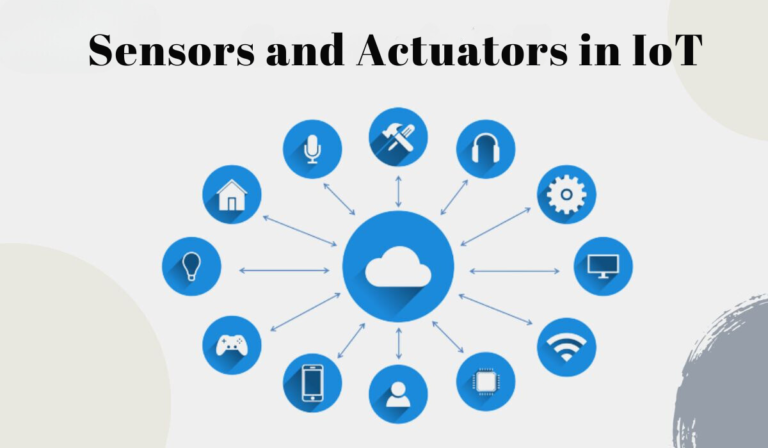
The sensors and actuators nexus the world with IoT. The naturally available data is taken with the help of sensors, converted to electrical data, and the data is processed with the help of microcontrollers. Systems powered by embedded systems often use microcontrollers like STM32, which are programmed using Embedded C or C/C++ to efficiently handle and process sensor data. The processed data, which is electrical in nature, is converted to a physical form with the help of actuators, which is why sensors and actuators serve as the bridge between the real world and technology.
The importance of IoT with sensors and actuators is discussed below. IoT captures physical quantities using sensors, processes the data with tools, software, and microcontrollers, and then converts it into physical actions using actuators over the internet. With billions of devices connected through IoT, the integration of sensors and actuators is essential to interface a variety of systems. These concepts are paramount in embedded systems, making IoT-enabled devices highly valuable in the modern world.
There are different types of sensors that measure physical quantities like heat, light, sound, position, gas, level, and pressure. Manufacturers customize sensors and actuators on demand. Using these components effectively is part of the hands-on skills taught in the best embedded training in Bangalore, where students gain proficiency in working with microcontrollers like STM32 and programming languages such as C Programming, C++, and Embedded C.
The actuators generate motion based on inputs like compressed air, electrical energy, or fluid pressure. For example, a biometric punch machine takes an employee’s fingerprint (a physical input) through a sensor. This data is processed by software and actuators connected via IoT, enabling functionalities like attendance management or salary calculations.
The inputs used to generate motion in these actuators include compressed air, electrical energy, or fluid pressure. Understanding how these components work together is a key part of embedded systems training.
Smart Home Device Control Systems:
IoT systems control ACs, lights, fans, and other appliances remotely by gathering input from sensors. These systems rely on microcontrollers programmed in Embedded C to switch off devices automatically based on sensor data thresholds.
Smart Traffic Control Systems:
Traffic signals are adjusted based on real-time monitoring using sensors, enhancing traffic flow.
Self-Driving Cars:
Modern autonomous vehicles use sensors and actuators, often integrated with embedded systems running on STM32, to detect obstacles, prevent accidents, and send emergency alerts.
Robots:
Wheelchair robots for paraplegic individuals operate through embedded solutions that process finger movement data. C and C++ code enables smooth communication between sensors and actuators for precise control.
CCTV Systems:
IoT-enabled cameras provide remote monitoring, with the data processed and stored for future use.
Smart Health Management Systems:
Ventilators with IoT sensors and actuators ensure better patient care. Medical devices that incorporate STM32 microcontrollers and Embedded C can also support remote monitoring and long-term data storage, useful for research.
Mastering these concepts requires practical learning. IIES as one of the best embedded training in Bangalore equips students with the skills to work on microcontrollers like STM32 and develop efficient embedded systems using C, C++, and Embedded C. Whether it’s building IoT solutions, smart healthcare devices, or autonomous systems, hands-on training ensures students are industry-ready.
Must Read: Embedded Systems Course for Beginners
Indian Institute of Embedded Systems – IIES